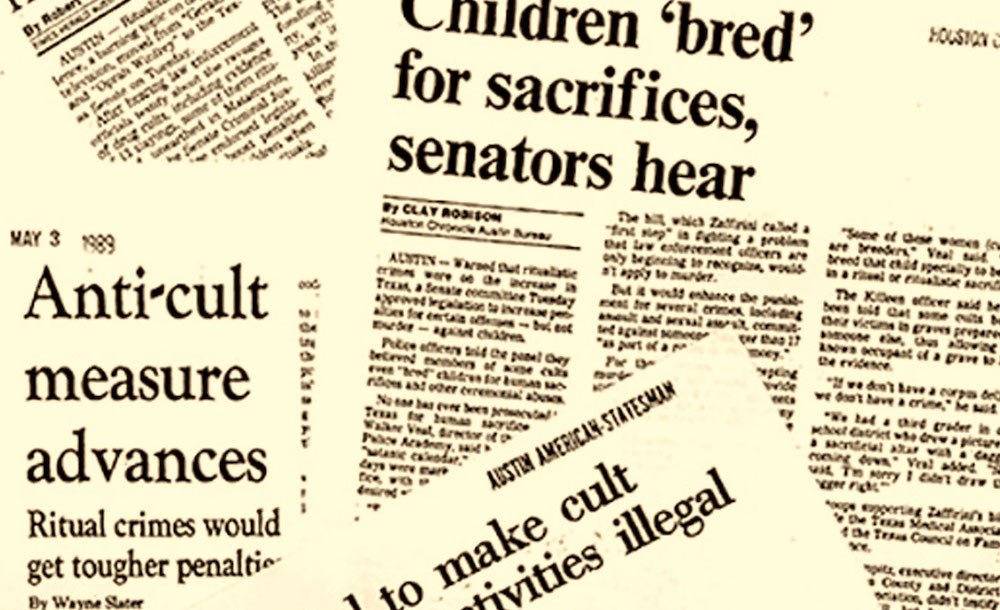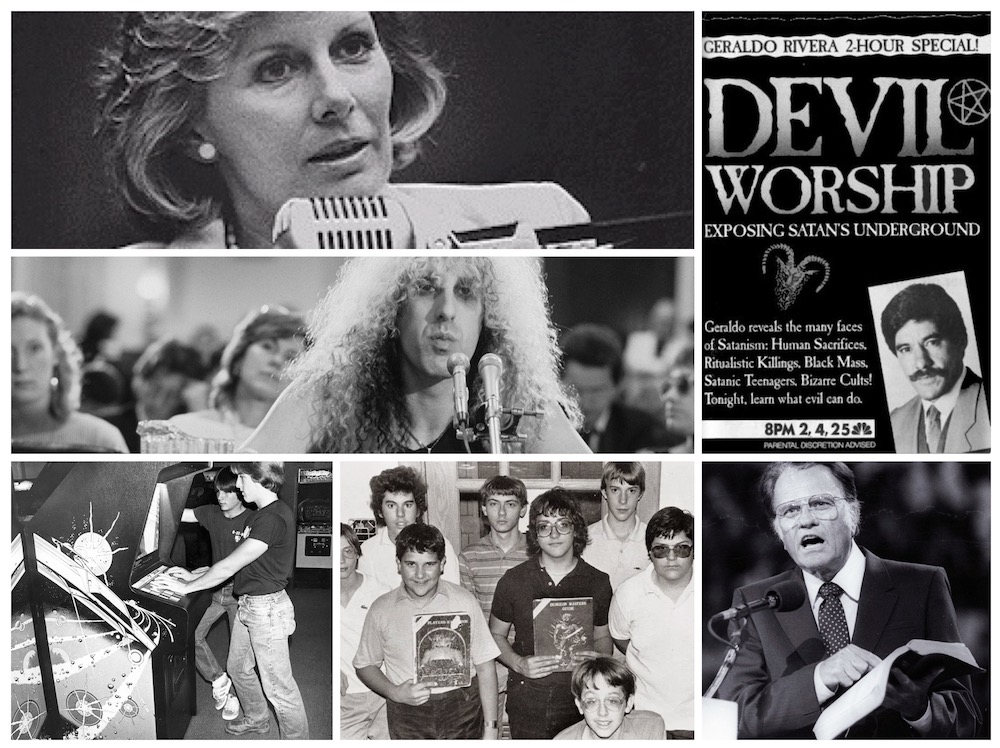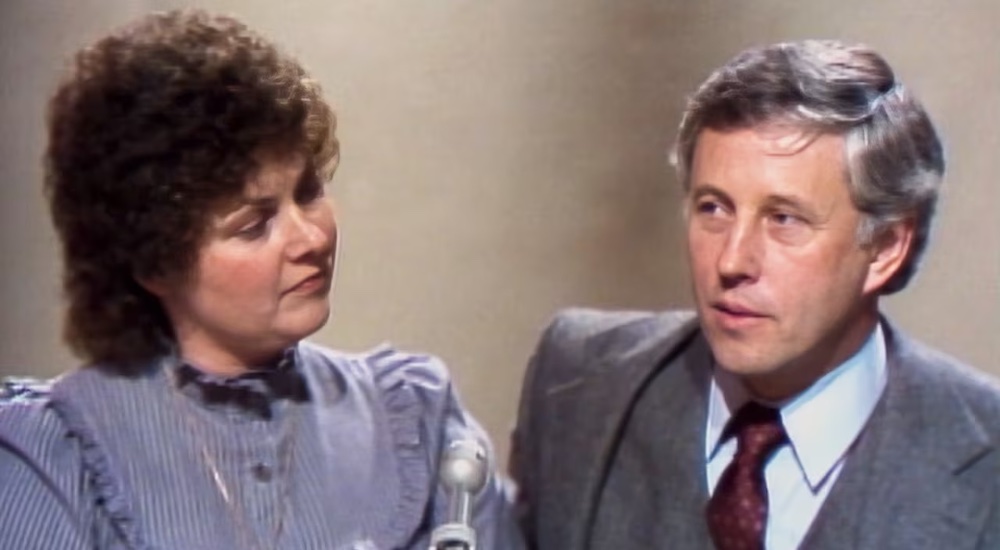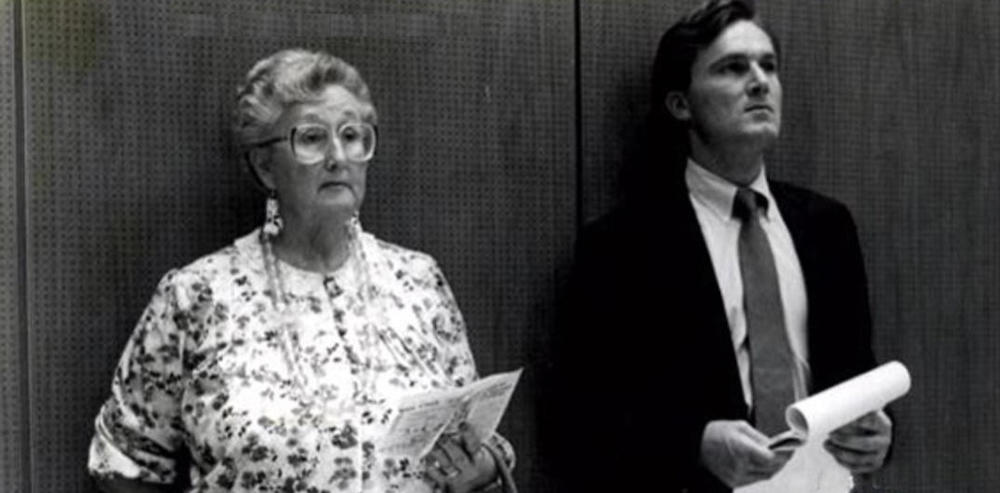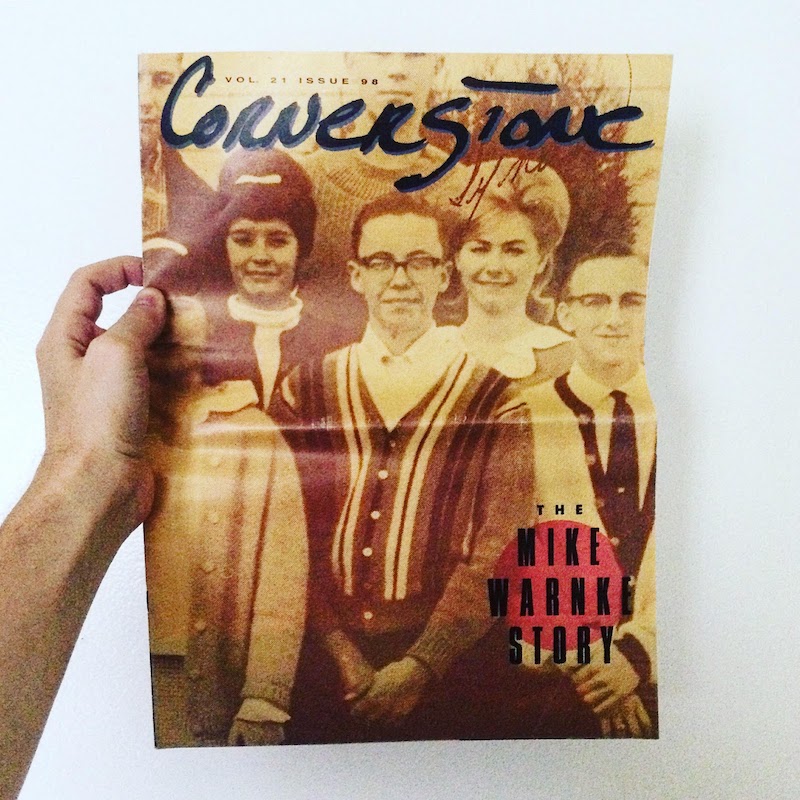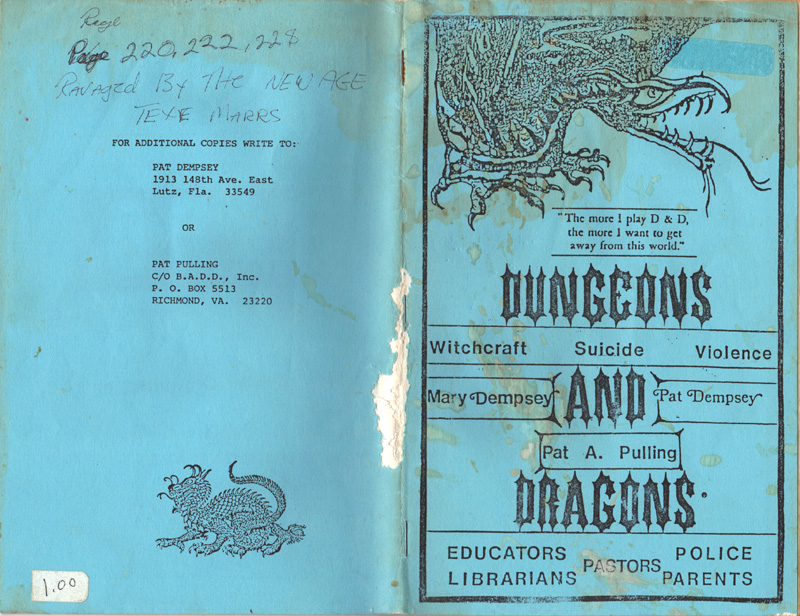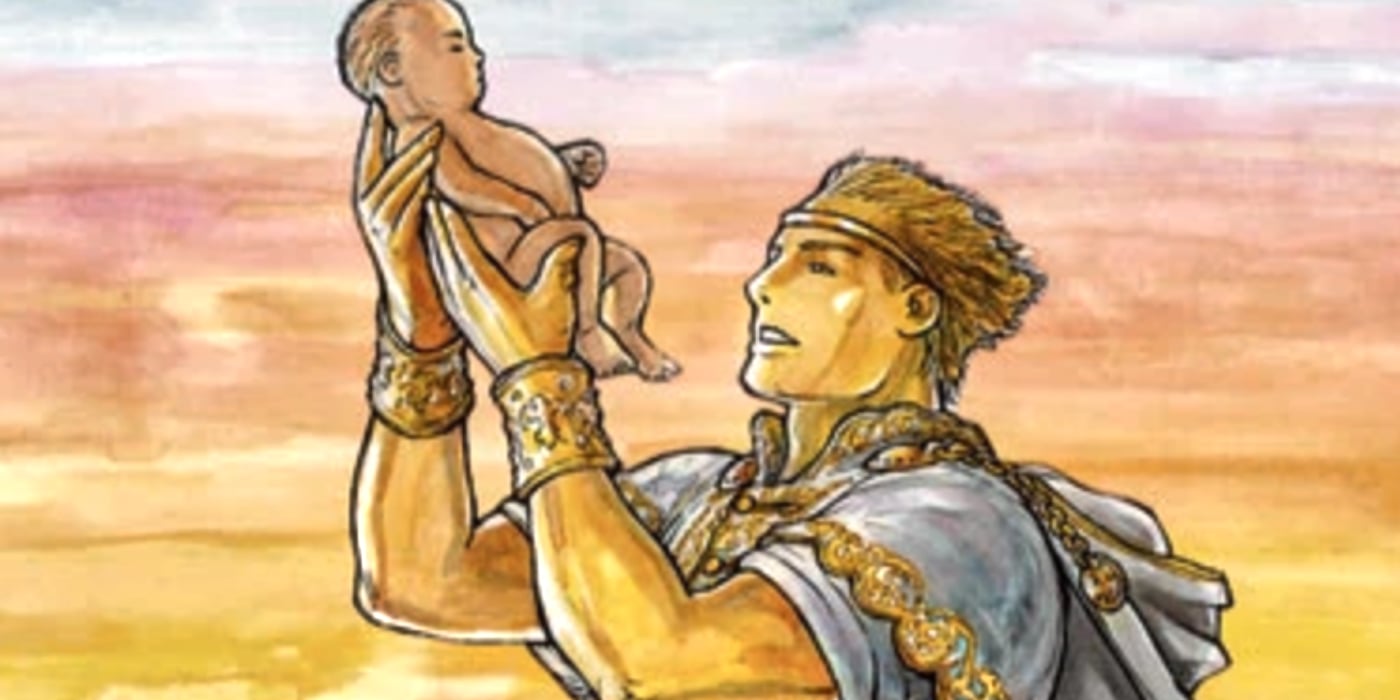The Satanic Panic: Beyond Dungeons & Dragons

Stranger Things touched on the Satanic Panic that took hold in the 1980s. It was about more than D&D—here’s the real history.
When Satanic Panic comes up in gaming circles, it’s usually a joke about the overreaction to D&D in the 1980s. People picture ridiculous Chick Tracts and movies like Monsters and Mazes. The most recent season of Stranger Things dipped its toe into the insanity and how dangerous it was. But the hysteria went beyond tabletop gaming. And what happened to some of the people swept up in it? That is genuinely terrifying.
Satanic Panic Origins – A Culture Clash
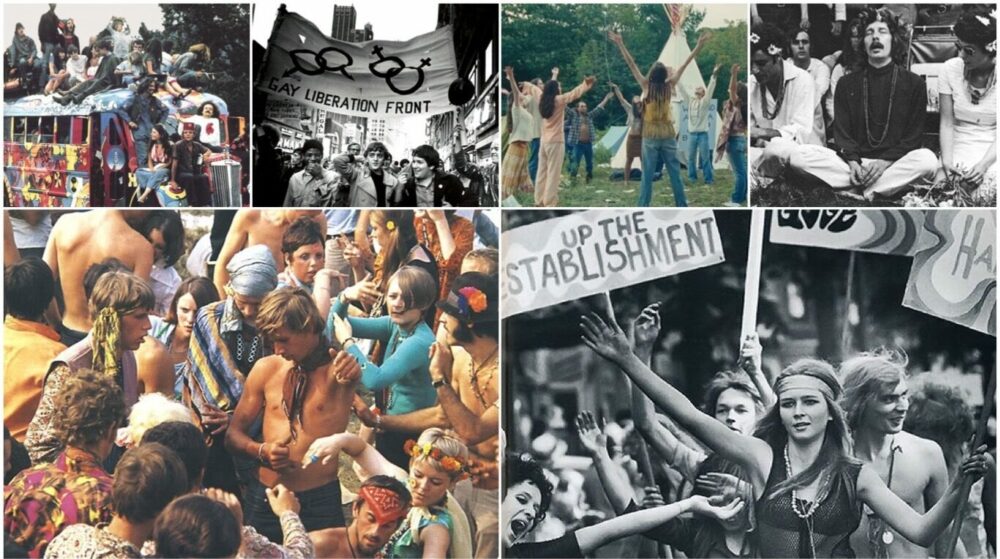
Satanic Panic came to a pinnacle in the ’80s. To understand why things got so out of control, you have to dig back twenty years earlier. Let’s take a look at the emergence of the anti-establishment counter-culture in the 1960s. There were significant challenges to the way sexuality, authority, spirituality, drug use, and other societal ideals changed.
The decade also brought a new kind of violence to the forefront of society’s consciousness. JFK’s assassination, the Manson Family murders, and Edmund Kemper all made headlines and the national evening news.
These events set the stage for Anton LaVey’s Church of Satan, which emerged in 1966 in San Francisco. LaVey published The Satanic Bible in 1969. The church’s beliefs align more with Ragnar Redbeard’s Might is Right than the devil-worshipping cults you see in horror movies, though. LaVey made a big show of hosting rituals in his home from the mid-’60s through the early-’70s. It made the church infamous worldwide.
He invited journalists to attend black masses and Satanic baptisms. These events included nude women on alters, hooded robes, and swords. In its heyday, the church counted Sammy Davis Jr. and Jane Mansfield as members. Its existence as a formal church that flaunted itself out in the open impacted popular culture. One that would reveal itself in the coming years.
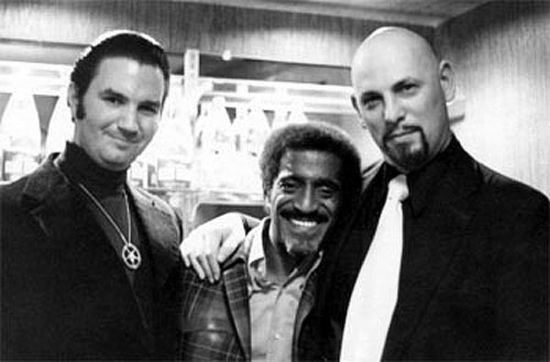
Enter Pop-Culture
As we moved into the 1970s, Satanism started to appear in popular culture. Folks saw the release of books like William Peter Blatty’s best-selling The Exorcist in 1971. Horror movies that focused on evil cults and demonic possession became popular. The box office success of The Exorcist transformed the previously jokey and fun Ouji board into a spiritual threat. It made demonic possession a real topic of discussion. Its level of realism was convincing. Perhaps that’s why the film also saw a lot of protests.
Pop culture was embracing the dark, witchy, and unknown. The time also saw the introduction of rock music with occult overtones. Bands like Coven, Black Widow, Led Zeppelin, and Black Sabbath were assumed to be so. Intense scrutiny of song lyrics was a common topic on the Trinity Broadcasting Network, Calvary Chapel, and others.
Televangelism Rises
The decade also saw a reaction to all of this in the form of Televangelism. Chick tracts focused on pop culture. Books like The Satan Seller by evangelist Mike Warnke and testimony from people who claimed to be former satanic priests, like John Todd, professed secret satanic cults existed. These accounts claimed that Satanists were operating covens that practiced ritualistic sex orgies. Of course, this was false and was discredited entirely later. Nevertheless, it did inspire what was to happen in the next decade.
John Todd is of particular interest to D&D players. He wrote several comics with Jack Chick that demonized the game. This includes a comic (Spellbound?) that connects D&D to the Illuminati and witchcraft. He also wrote the infamous Dark Dungeons, which portrayed D&D as a direct gateway to Satanism.

Fundamentalists Seize on New Violence
As with the previous decade, a new kind of violence was rising. The Zodiac Killer and David Berkowitz (who claimed to be a part of a satanic cult) were on the news. The Jonestown massacre punctuated the end of the ’70s. It provided a look at violent cults that relied on systematic brainwashing to control members. These led to a new level of public fear that the media fanned into a mass panic.
The challenge of societal norms and the rise of the occult in pop culture scared older generations. Add in the fundamentalist Christian right, a rise in terrifying killings, and constant media coverage. Combined, these things would create the source for the full-blown Satanic Panic as we know it. The movement would cause the demonization of popular culture. It also led to innocent people being jailed and a new type of dangerous psychotherapy to rise.
Psychology of Moral Panic
At this point, I’m going to take a slight sidestep into psychology/sociology. Groupthink, authority, and motives behind conspiracy beliefs had a lot to do with what happened next.
Stanley Cohen coined the term ‘moral panic’ in the early 1970s. Moral Panic is “a condition, episode, person or group of persons [that] emerges to become defined as a threat to societal values and interests.” His work Folk Devils and Moral Panics lays out the elements:
- Concern about the potential or imagined threat;
- Hostility – moral outrage towards the “folk devils” who embody the problem and agencies who are “ultimately” responsible
- Consensus – a widespread agreement that the threat exists, is serious, and that “something should be done.” The majority of influential groups, especially the mass media, tend to adopt this consensus.
- Disproportionality – an exaggeration of the number or strength of the cases, in terms of the damage caused, moral offensiveness, and potential risk if ignored. Public concern is not directly proportionate to objective harm.
- Volatility – the panic erupts and dissipates suddenly and without warning.
Moral Panic Players
There are two roles in play with moral panic. The establishment or “moral entrepreneur” and “folk devil” or the opposition. The former are usually organized groups like governments, religions, mainstream media, and institutions. The latter are groups like hippies, mods, teenagers, rock and roll musicians, D&D players, video games, etc. You get the gist.
Also involved are some theories about how humans react to authority, conformity, and social norms.
The Satanic Panic in the 1980s
The 1980s had its own dangers pointed directly at children and the traditional nuclear family. Societal norms were changing yet again, and there was pushback from folks at odds with urbanization. They didn’t like the idea of women joining the workforce instead of staying at home. Going to work would force them to put their kids in daycare. The pushback against these changes came in the form of Christian fundamentalism. Jerry Falwell’s fire-and-brimstone preaching and Moral Majority organization began to gain traction.
Beyond the social changes, the decade started with the Tylenol murders in 1982. Then came the fear that drugs/needles were in Halloween candy and a wave of stories about clowns preying on children. The advent of printing photos of missing persons on milk cartons started in the early ’80s, making another sort of crime visible to the masses. “Stranger danger” became a lesson and catchphrase taught to every kid. It seemed like families and children were under attack.
Chick Tracts and the Crusaders
Jack Chick and others from the 70s evangelical movement continued to have a voice. Inspired by Chick tracts, Patricia Pulling led a crusade against Dungeons & Dragons and other RPGs, claiming that a curse from D&D caused her son to commit suicide. She filed several lawsuits against TSR. After those failed, she founded Bothered About Dungeons and Dragons (BADD) in 1983.
The organization claimed that D&D encouraged devil worship, cannibalism, suicide, prostitution, and murder, among other things. She started by pushing her message via Christian-focused and mainstream media. Pulling went so far as to get her PI license. She became a law enforcement consultant and expert witness for gaming-related lawsuits. None of her cases resulted in victory.
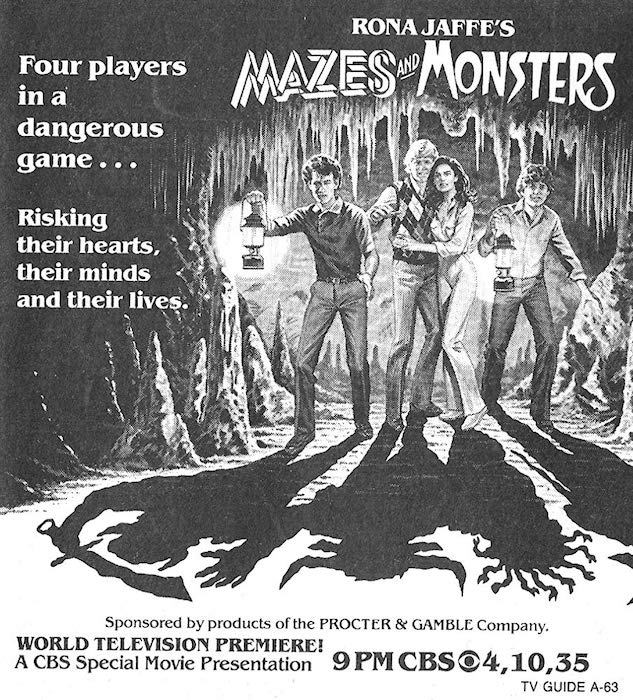
Other anti-occult crusaders started appearing on national television shows like 60 Minutes and 20/20. This included Jim Peters (who claimed the Proctor & Gamble logo was satanic) and Lauren Stratford. Occult fear-mongering in the media became a regular occurrence. ABC televised an “official” Roman Catholic exorcism, and Giraldo Rivera devoted a 2-hour show to how satanism was taking over America. This coverage gave the conspiracy theory an air of plausibility.
Books Fan the Flames
Multiple books from authors claiming that they were kidnapped or raised by a satanic cult hit bookstores. Michelle Remembers and Satan’s Underground detailed ritualistic sexual abuse at the hands of a powerful, underground satanic cult. These books claimed that Satanists operated in everyday neighborhoods and used daycare centers to steal children. It was all false, of course.
But psychologists backed the stories, so they were seen as being plausible. These psychologists practiced ‘recovered memory therapy’ using regression hypnosis that they claimed brought hidden memories to the surface. The psychology and social work communities widely accepted it at the time.
In 1983, Satanic Panic went from ridiculous conjecture on religious TV shows to mainstream. Reports on supposedly satanic games and music to something that ruined innocent people. Southern California became ground zero for cases involving satanic ritual abuse. This is where full-blown moral panic enters the picture.
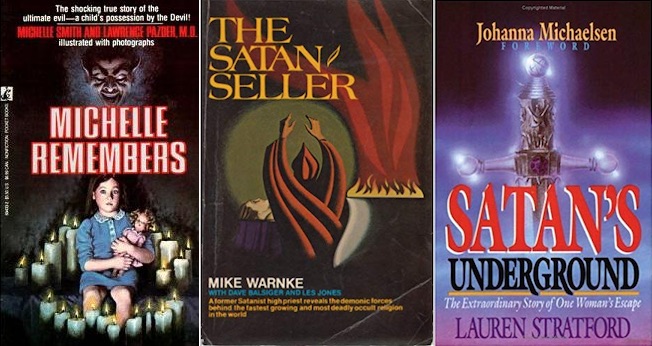
False Claims of Ritual Abuse
The first case was in Kern County. Michelle Remembers had a direct link to claims that were heard by a group of social workers in California. It had become common reading material and believed. Children started to come forward with stories of molestation at the hands of an occult sex ring. They were taken seriously.
Over several months, children would claim to have been forced to drink blood. Others claimed they were hung from hooks in their family’s living rooms and forced to watch ritual sacrifices. The people behind these atrocities were supposedly family members, neighbors, teachers, and social workers. Just about anyone a child knew was accused.
You’d think that the outrageousness of the claims made would have made the legal system think twice about it. Between 1984 and 1986, twenty-six people went to jail for interrelated convictions with no physical evidence of any crime. The parents of one child were sentenced to 240 years in prison.
Nearly all of them have been overturned because of overwhelming evidence that the children were coached. Many went through “recovered memory therapy” that implanted memories rather than resurfacing ones that existed. Some of those convicted spent over a decade incarcerated before being exonerated of horrible crimes they were falsely accused of.
The McMartin Case
Kern County was just the start. In 1983, what was to become the longest, most expensive trial in California’s history began. A parent accused the staff at McMartin pre-school of abuse, so an extensive investigation followed. It included interviews of the around 400 children who attended the daycare center. Those were led by an unlicensed social worker named Kee MacFarlane. Her lack of license didn’t stop the police from letting her be a central figure in the investigation.
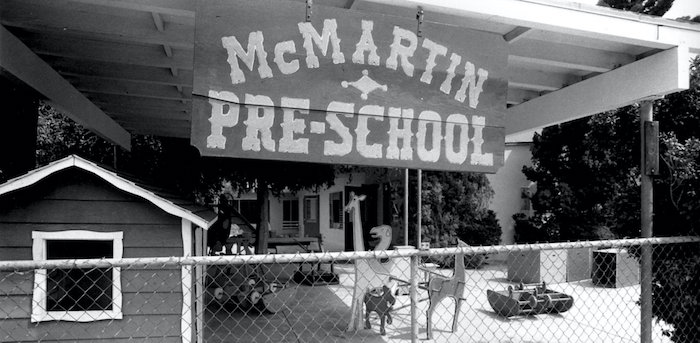
Kee and her assistants used questionable coercive methods in their interviews, including hypnosis that produced false memories. The claims were as fantastical as those in the Kern County cases. Children claimed staff flushed them down toilets and transported them to ritualistic ceremonies via underground tunnels. Some of the kids said staff members were witches who could fly. One of the children identified Chuck Norris as one of the abusers.
At the end of Kee’s investigation, she claimed that a satanic cult abused 359 out of the 400 children. It was supposedly led by Raymond Buckey, his mother, Peggy McMartin Buckey, and their seven staff members.
Kee Debunked
After a six-year-long investigation, the case went to court with LA District Attorney Ira Reiner leading the prosecution in 1987. It took the state five years to come to the conclusion that the evidence presented wasn’t real. It cost the state over $5 million.
The prosecution eventually agreed with the defense team and dropped the case. It was discovered that the person who was initially reported in 1983 was hospitalized due to acute paranoid schizophrenia. All of those accused were acquitted.
The Kellers
A year after the McMartin trial concluded, another major case hit the news. In Austin, Texas, another family that ran a daycare was hit with allegations of satanic ritual abuse. While being treated for behavioral problems, a child in their care told her therapist that she had been sexually molested. She accused Fran and Dan Keller.
Other children were brought in during the investigation who claimed to have been forced to drink blood-laced Kool-Aid. They claimed that the Kellers wore white robes and burned candles while killing animals and dismembering a baby. Some of the children claimed they had flown in a plane to Mexico, where they were abused. They were somehow returned in time for their parents to pick them up the same day.
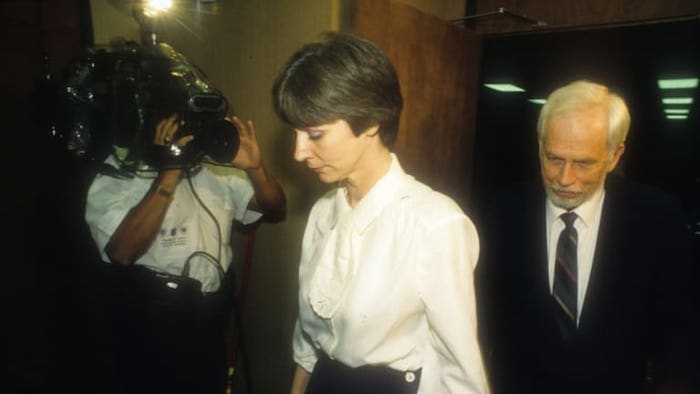
Parents began contacting one another and started trading stories. They began accusing public officials and police of covering up a nefarious satanic cult. It ultimately went to trial in 1992. The initial child testified that she was coached by adults. The jury, convinced by an incorrect medical exam, convicted both of them to 48 years each.
The Kellers were finally exonerated in 2013. The prosecution admitted they hid evidence from the defense and that there was no physical evidence of abuse. They also allowed testimony from a dubious satanic ritual abuse expert.
The Aftermath of the Satanic Panic
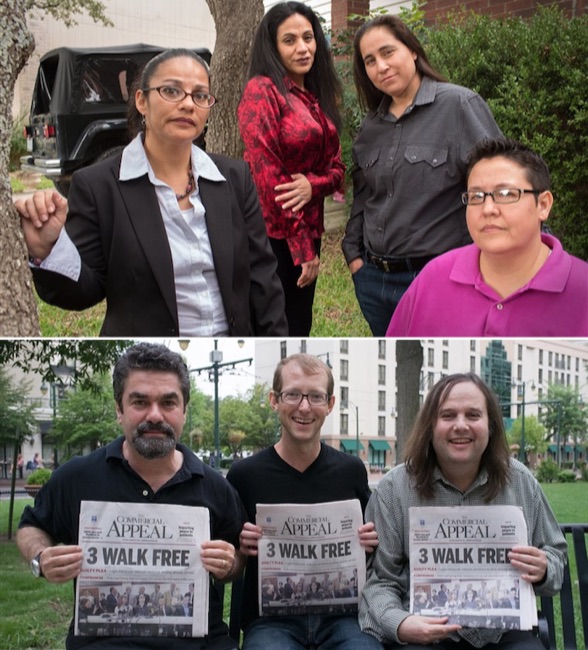
There were hundreds of other cases of satanic ritual abuse in the 1980s and 1990s. For example, the Fells Acres Day Care trial, the case against Frank and Ileana Fuster, the San Antonio Four, and the West Memphis Three. Legislation passed in Texas based on false information and stayed on the books for four years. There have been exonerations. There have also been deportations, and innocent people are still waiting on retrials. At least one died while waiting for the court system to do its job.
The Department of Justice put out a report in 1992 that thoroughly debunked the myth of satanic ritualistic abuse cults, and the accusations of daycares being involved in cult activity were on the outs in the early 1990s. This doesn’t mean the report stopped the hunt for satanic cults. This video circulated in police training, was created in 1994 after the West Memphis murders.
Lawsuits against therapists over implanted memories have ousted ‘satanic ritual experts’ like Dr. Alan Tesson, leading to academic research at the National Center on Child Abuse and Neglect. Exposing practitioners that use repressed memory hypnosis was one of the first missions of what would become The Satanic Temple. They still carry out this work as The Grey Faction.
Where Are They Now?
So, where are some of the major players in this tragedy now?
Jack Chick – He created and published his tracts till he died in 2016. You can explore them here.
John Todd – Due to the extremity of his views, several publications dug into his past and found inconsistencies. He had been convicted and served jail time for sexual assault of a minor. He was eventually expelled from the evangelical movement after claiming Jerry Falwell and Billy Graham were members of the Illuminati. Todd also claimed that Jimmy Carter was the Antichrist. Chick defended him for years after. He died in a psychiatric care facility in 2007.
Mike Warnke – During the ’80s he claimed to have college degrees he did not earn (including a Ph.D.), and he became a Bishop of the Byzantine Catholic Church, Inc. to lend more credence to his stories. His claims in Selling Satan were widely discredited. He was exposed as a fraud by Christian magazine Cornerstone in 1992. The fallout included a Wernke being dropped by his publisher and the closure of his ministries. He still professes that he was a satanic cult member as a child.
Kee MacFarlane – She later admitted she was “naive in never having been part of a case like this.” She stood behind her findings in the McMartin trial, though. She even testified before Congress that she believed there was a nationwide satanic cult conspiracy.
Patricia Pulling – Her views were increasingly questioned as RPGs became more popular. Her statements were entirely discredited by scientific studies published by the American Association of Suicidology and the U.S. Centers for Disease Control in the early 1990s. She died in 1997. Bothered About Dungeons and Dragons (BADD) ceased to exist after her death.
Is Satanic Panic Over?
Dungeons & Dragons was only part of a larger story of cultural change and moral panic. It also highlighted the failures of the justice system. And don’t think we’re out of this mess just yet. While D&D is experiencing an all-time popularity high and the panic of the 1980s has become a punch line, people are still being falsely accused of satanic cult murders and abuse on a large scale.

